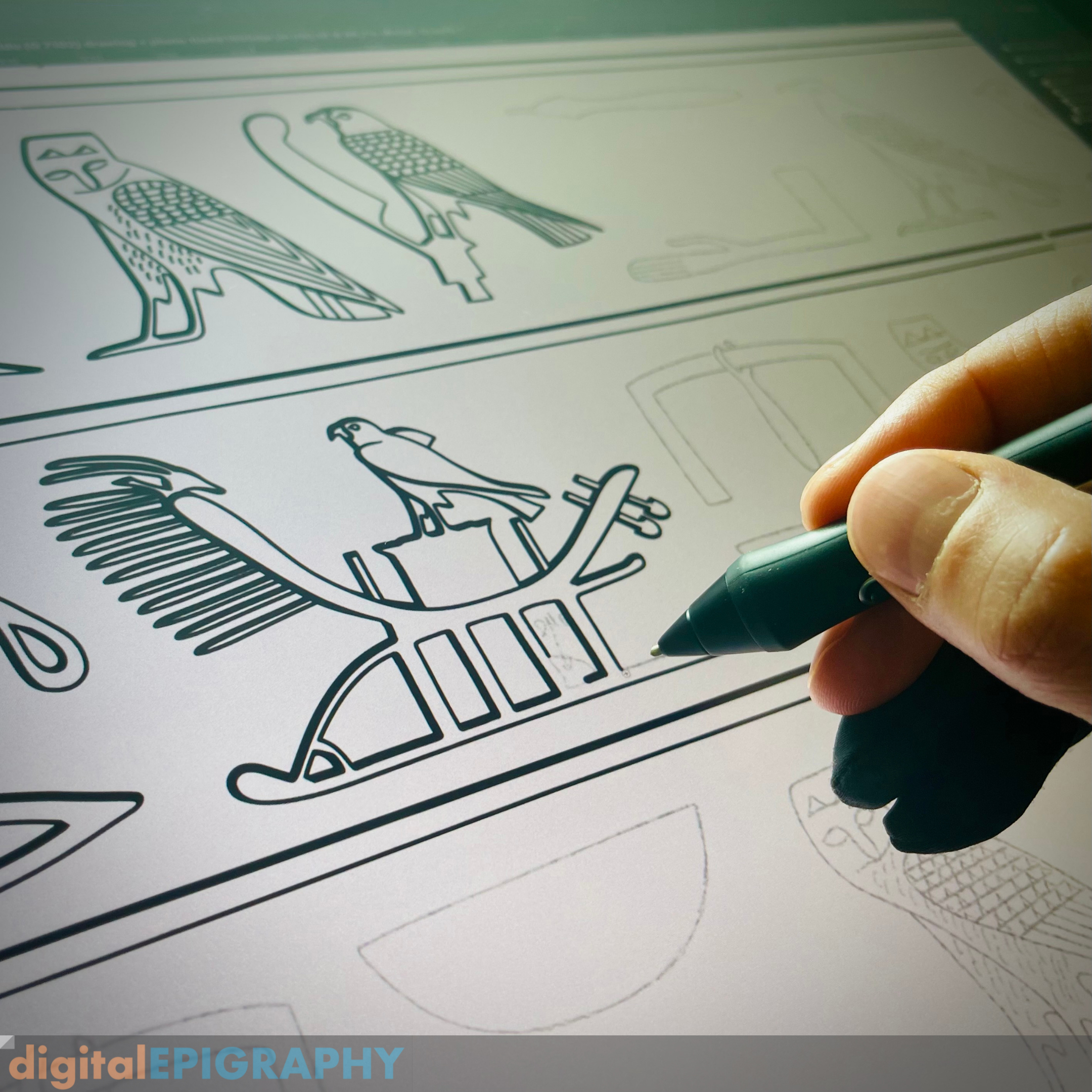Digitally Inking the Mastaba Architrave of Old Kingdom Scribe, Idu

Recent advances in computerized drawing equipment and graphics software now make it possible to perform all stages of the Chicago House Method using digital technology. In the updated version of the method, the artist uses scanned photographs and digitally generated orthomosaic photographs to "pencil" each scene's essential outlines and details or text by directly observing the original on a drawing tablet with a digital drawing stylus.
The digitally penciled enlargement is then used as the background for the sun-and-shadow lines' digital “inking” layer. The artistic conventions used for raised and sunk relief, traces, damage, plaster, and other features of the decorated surface remain the same. The care and skill required of the artist are as great as those required for inking on paper. Still, the digital drawing gives greater flexibility in how the inked drawing can be manipulated, allows the transfer of the information in multiple scales and formats, and makes any necessary corrections go much more quickly.
However, the speed of the process still largely depends on the quality and delicacy of the original work of art. When looking at the exquisitely detailed hieroglyphs presented by the ancient artist on the mastaba architrave of Old Kingdom scribe, Idu, one can only admire the care that went into carving each hieroglyph on these walls. Similarly, when creating the visual interpretation of this monument, the digital artist must take certain measures, carefully crafting every detail while keeping the stylistic attributes in sync with the original. The essence of digital documentation lies just as much in the details as has always been with its traditional counterpart.
This post was originally released as part of digitalEPIGRAPHY's growing Instagram collection. If you'd like to see our latest photos as soon as we post them, please follow us on Instagram.
Back to Gallery




